The week at a glance
- Short-billed Dowitchers remain in Dorset and on Scilly
- Baillon's Crake still in London
- First Buff-bellied Pipit of the autumn arrives in the Outer Hebrides
- Spanish Sparrow again briefly in Suffolk
- Probable Black-browed Albatross in the Irish Sea
- Strong influx of Pectoral and Buff-breasted Sandpipers, and American Golden Plovers
Courtesy of what was Hurricane Leslie, northern areas in particular endured another bout of windy and often very wet weather during the first half of the week. With it came a further arrival of Nearctic shorebirds although, unlike the previous week, finds of the highest order were comparatively sparse. Nevertheless, the continued presence of several of the recent stars ensured that, along with plenty of scarce waders beginning to trickle south across Britain, there was plenty to go at for everyone.
Both juvenile Short-billed Dowitchers — at Lodmoor (Dorset) and on Tresco (Scilly) — extended their stays well in to the week, although the latter bird was not reported after 17th. Given that all previous British and Irish records have gone on to become long stayers, it seems likely that at least of one of these will be with us for some time, if not all winter.

Short-billed Dowitcher, Tresco, Isles of Scilly (Photo: Martin Goodey)
Despite there being no sign of last week's Semipalmated Plover on South Uist, a combination of lingering birds and plentiful new arrivals ensured that waders otherwise continued to dominate the headlines. For example, the Semi-P's favoured island of South Uist hosted at least three of a minimum of 16 American Golden Plovers seen this week, with another a stone's throw away on Benbecula and a further individual on Lewis. As one would expect for mid-September, most were adults, although several juveniles — including a showy bird on Achill Island (Mayo) on 15th–16th — were noted. Two adults remained on North Ronaldsay (Orkney) throughout, while Sanday hosted an adult and a juvenile. Further Irish records concerned adults at Truska (Galway), Bridges of Ross (Clare) and The Cull and Tacumshin (Wexford). The only English records came from Edderthorpe Flash (S Yorks) on 13th and Port Carlisle (Cumbria) from 18th.

American Golden Plover, Keel, Achill Island, Mayo (Photo: Josh Jones)
Arguably the most impressive feature of the week was a fantastic influx of over 75 Pectoral Sandpipers nationwide. Peak counts of four came from Loch of Strathbeg (Aberdeenshire), North Ronaldsay (Orkney) and the Ouse Washes (Cambs) on 17th, while up to three were at Tacumshin (Wexford) and twos were at eight well-distributed sites. An unfortunate reminder of just how tough the transatlantic crossing must be during inclement weather came from Cape Clear (Cork), where a juvenile was sadly found dead on 17th.

Pectoral Sandpiper, Toft Newton Reservoir, Lincolnshire (Photo: Nick Clayton)
At least 30 Buff-breasted Sandpipers were also widely distributed across Britain & Ireland. Once again Carrahane Strand (Kerry) came out on top with up to four present there throughout the week, although the Myroe Levels (L'derry) and Bornish, South Uist (Outer Hebrides) came close with three apiece. East-coast sites also pulled in multiple birds, with twos at Loch of Strathbeg (Aberdeenshire), John Muir Country Park (Lothian) and Goswick (Northumberland) from 16th onwards in addition to a brace at the Butt of Lewis. Most other records concerned single individuals in the far north and west including one in-off at the Bridges of Ross (Clare) on 13th, although notable English records came from Slimbridge (Glos), and Selker Point and Walney Island (Cumbria).

Buff-breasted Sandpiper, Smeale, Isle of Man (Photo: Sean Gray)
Although Nearctic shorebird densities are high across Britain and Ireland at present, there hasn't yet been the explosion of Semipalmated Sandpipers as there was in 2011. Juveniles were noted at Tyninghame Bay (Lothian) from 13th and Ballykelly (L'derry) on 15th, while birds at Hoylake (Cheshire) on 19th and at Baile Gharbhaidh (Outer Hebrides) were both considered possible candidates for Western Sandpiper by some. The latter was last seen on 17th, along with a Pectoral Sandpiper and a White-rumped Sandpiper, although not afterwards — could it be the same bird relocating south to the Wirral?
Further new White-rumps included two adults at Ardivachar Point, South Uist on 18th in addition to singletons at Steart (Somerset) from 15th and on the Alt Estuary (Lancs) on 18th. Adults also remained at Tacumshin (Wexford) and on the Ouse Washes (Cambs) to 13th. Juvenile Baird's Sandpipers involved birds at Kilcoole (Wicklow) on 14th–18th, Tresco (Scilly), Esha Ness (Shetland) on 16th and Titchwell (Norfolk) on 19th, with a fifth belatedly identified from video footage taken at Pennington Marsh (Hants) on 14th.

Curlew and White-rumped Sandpipers, Steart, Somerset & Bristol (Photo: Allan Chard)

Baird's Sandpiper, Titchwell RSPB, Norfolk (Photo: Rob Wilson)
Elsewhere, juvenile Spotted Sandpipers remained at Smerwick Harbour (Kerry) to 16th and Rubha Ardvule (Outer Hebrides) to 19th, while the Lesser Yellowlegs at Kingsmill Lake (Cornwall) and the Long-billed Dowitcher at Slimbridge (Glos) remained throughout.
It was rather bizarre to think that the week's real rarities were species from closer to home — the Temminck's Stint at Christchurch Harbour (Dorset) on 16th, the two Black-winged Stilts briefly at Cottam (Notts) on 18th and the Red-necked Phalarope at Newhaven (E Sussex) that day were all undeservedly overshadowed by Nearctic invaders.
The unsettled conditions also provided some reasonable seawatching throughout the week. It was the Irish Sea that scored the week's highlights: a probable Black-browed Albatross that flew south past the Calf of Man (IoM) on 18th was predictably seen off South Stack (Anglesey) the following day. As it flew north at the latter site, perhaps there is the chance it may linger in the area? Bardsey Island (Gwynedd) also weighed in with a probable Barolo Shearwater on 17th. It was otherwise a case of typical mid-September fare, with good numbers of Leach's Storm-petrels and Grey Phalaropes seen from west-facing coasts. The Bridges of Ross (Clare) claimed the week's highest day counts with 45 and 35 respectively, although 15 Leach's past Hoylake (Cheshire) on 18th were followed by double-figure counts from several traditional sites on the Wirral coast the following day. Also associated with the movement were smaller numbers of Long-tailed Skuas, with one over Windsor Great Park (Berks) on 17th the sole inland record. Sabine's Gulls remained comparatively scarce, although lingering birds off Cley (Norfolk) on 13th and Hartlepool Headland (Cleveland) on 15th were welcome. The only Great Shearwater concerned a bird showing well on the sea off St. Ives Island (Cornwall) on 18th.

Leach's Storm-petrel, Leasowe, Cheshire (Photo: Jason Atkinson)
Following last week's influx of records, a blue-morph Snow Goose on Sanday (Orkney) on 18th was the only individual of the week. Up to two Ferruginous Ducks were at Chew Valley Lake (Somerset) throughout, with a Ferruginous hybrid also there along with the drake Lesser Scaup. Last year's drake Ferruginous also returned to Far Ings (Lincs) from 13th, although an unusual blackish-green sheen to the head perhaps indicates impure ancestry. A drake Surf Scoter flying south past Uisaed Point (Argyll) on 18th was a great record.

Ferruginous Duck, Far Ings NR, Lincolnshire (Photo: Andy Hood)

Surf Scoter, Machrihanish (village), Argyll (Photo: Eddie Maguire)
Clyde's drake Blue-winged Teal returned to its springtime haunt of Bridgend Farm Pool on 16th, while more exciting were newly arrived female/juveniles at Lough Beg (L'derry) on 14th and Marshside (Lancs) on 16th and 18th–19th. When seen well, a female-type at Daventry Reservoir (Northants) on 17th displayed a massive bill and was likely a hybrid with a Shoveler. Ongoing hybridization problems also gripped Achill Island (Mayo), where the drake Black Duck continued at Sruhill Lough alongside a flotilla of hybrids including some convincing imposters.
Great White Egret numbers increased this week, with as many as 20 reported. In the species' stronghold of Somerset, at least three birds continued to tour Westhay Moor and Shapwick Heath, with a single also at Catcott Lows. Three at Stodmarsh (Kent) on 14th–15th were some of at least five in the county, while Derbyshire had a red letter day for records on 16th: two flew over Ogston then Ramsley Reservoir, with a third seen at Carsington. Save a couple in Glamorgan and Carmarthenshire, the rest were distributed across England as far north as Lancashire. Last week's Cattle Egret in Leicestershire turned out to be a yellow-ringed escapee, while a flamingo sp. was reported at Drogheda (Louth) on 13th. Following the Stocker's Lake female in the spring, a brief Little Bittern at Sevenoaks Wildfowl Reserve (Kent) on 15th was the London recording area's second of the year. Glossy Ibises remained at Marloes (Pembrokeshire), Tacumshin (Wexford) and the Ouse Washes (Cambs).

Great White Egret, Stodmarsh NNR, Kent (Photo: Steve Ashton)
In contrast to last September when Pallid Harriers swamped much of Britain and Ireland, the only bird of prey of note this week was a juvenile Black Kite that arrived, out of the blue, at Spurn and later Kilnsea (E Yorks) on 18th. Apart from a typical scattering of Ospreys and Honey Buzzards, it was otherwise quiet.
In London, the juvenile Baillon's Crake continued to creep around the dense Juncus-covered island opposite Shooting Butts Hide at Rainham Marshes throughout the week, although it could go missing for long periods and thus left many frustrated. Musings of a two-bird theory were batted around during the week, although every photo in the Iris galleries shows a bird with a distinctive pale loral spot and thus the presence of two crakes seems unlikely. Spotted Crakes remained at Marazion (Cornwall), Greylake (Somerset) and Stanwick Gravel Pits (Northants).
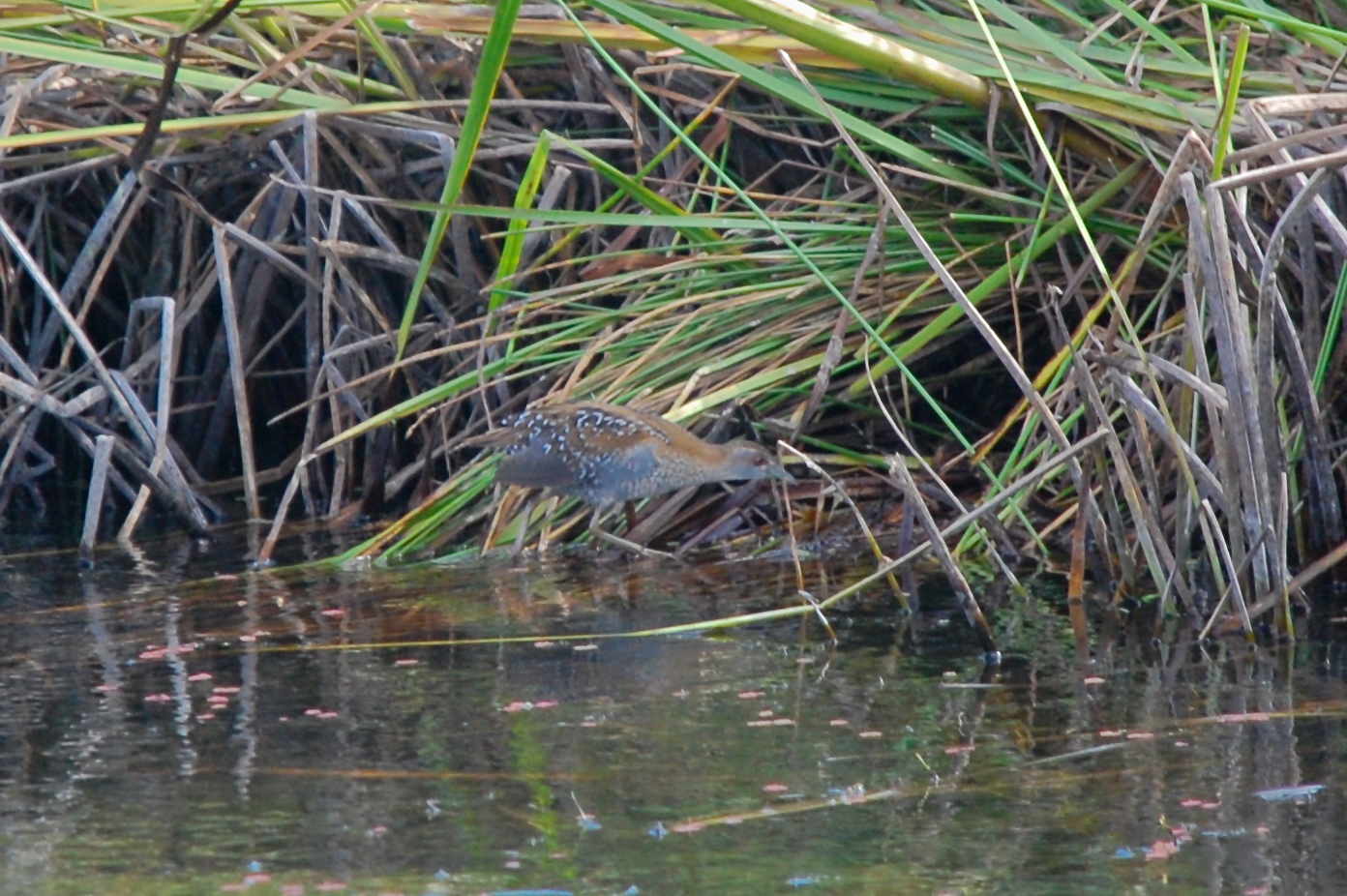
Baillon's Crake, Rainham Marshes RSPB, Greater London (Photo: Ben)
The sub-adult Azorean Yellow-legged Gull continued its stay in the Clonakilty area of Cork, being seen at Muckross on 17th. At the opposite end of the Emerald Isle, the adult Bonaparte's Gull returned to Larne (Antrim) from 14th while Ring-billed Gulls were noted in Kerry and Down. Back in Britain, the adult Ringer remained at Kinneil Lagoon (Forth), while a first-winter Gull-billed Tern flew north past Flamborough Head (E Yorks) on 18th.
A Hoopoe on private land near Attingham (Shropshire) on 13th was not seen subsequently, although several of the week's twenty-odd Wrynecks proved more confiding. Of these, a bird at Church Norton (W Sussex) on 13th–18th was reported with the greatest regularity, while another at Durlston Country Park was the easiest of five Dorset records to connect with. Three on St. Martin's (Scilly) on 13th were some of at least five around the archipelago during the week, while Cornwall and Pembrokeshire claimed three birds apiece.
Wrynecks aside, rare and scarce passerines from the east were at a premium. The Spanish Sparrow made another brief appearance at Landguard (Suffolk) on 14th. Last week's Citrine Wagtail on St. Mary's (Scilly) was joined by a second on 16th and 18th. An Arctic Warbler was reported from Bempton Cliffs (E Yorks) on 13th, although a River Warbler on Fair Isle (Shetland) on 16th was found unfortunately having kicked the bucket.
River Warbler excepted, Shetland was struggling to find form in the continuing westerlies. Nevertheless, the archipelago's first Red-eyed Vireo continued to show well on occasion in the garden at Valyie, Unst to 15th, while a male Lesser Grey Shrike somehow made it to Aith, Fetlar on 14th. Common Rosefinches included threes on Fair Isle and at Baltasound, Unst while the first Red-breasted Flycatchers of the autumn made it to Unst and Whalsay.

Red-eyed Vireo, Valyie, Unst, Shetland (Photo: Mike Pennington)
Other bits and bobs included an adult Rose-coloured Starling in St. Agnes (Cornwall) for at least the second day on 15th, and Ortolans on Tresco and St. Mary's (Scilly) with a third trapped and ringed at Portland Bill (Dorset) on 17th. New Melodious Warblers at Sandwich Bay (Kent) on 14th, and on Skokholm (Pembrokeshire) on 15th–17th joined the continuing Bardsey Island (Gwynedd) bird, while news from Lundy (Devon) concerned a further Melodious as well as a belated Short-toed Lark, seen on 12th. Late on 19th, the first Buff-bellied Pipit of the autumn was found at Rubha Ardvule, South Uist (Outer Hebrides) — once a mega vagrant, this species has become something of an expected autumn visitor in recent years.

Melodious Warbler, Bardsey Island, Gwynedd (Photo: Steve Stansfield)
With the wind predicted to swing for the first time this September over the weekend, it seems likely that east-coast birders will have plenty more to shout about next week as eyes, after being fixed westwards for much of the month, are slowly turned east...
Photo of the Week
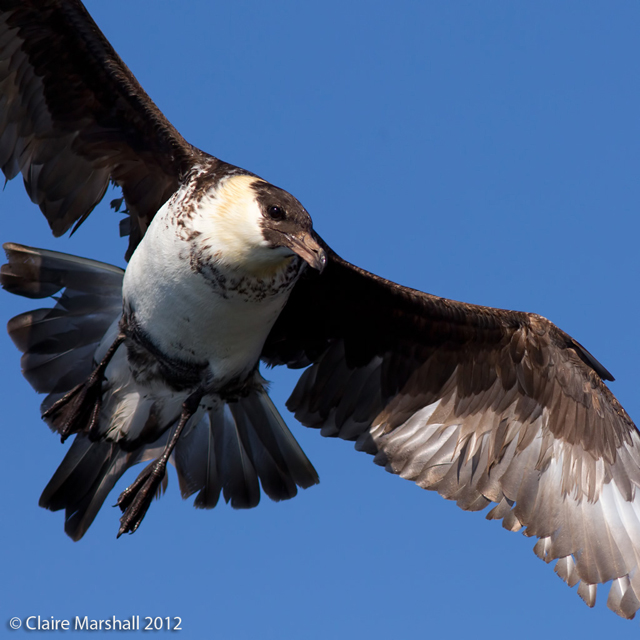
Pomarine Skua, Bridlington RSPB Skua Cruise, East Yorkshire (Photo: Claire Marshall)
Photographing skuas can be quite a challenge, especially outside the breeding season when they are most often seen as distant dots by dedicated seawatchers. One possible solution is to take a boat trip to place yourself in the birds' natural environment and, thankfully, a range of such pelagic trips are now available to get people into the best locations at the best times. Even so, this is a hit and miss affair, with some trips being much more productive than others. Taking the RSPB cruise from Bridlington on the east coast of England, Claire Marshall must have been hopeful of seeing at least one skua species on passage, but to have encountered the scarce Pomarine Skua at close quarters must have far exceeded her expectations. Impressively, even as this stunning bird reached frame-filling range of the boat, Claire still managed to keep it in focus and capture a dynamic banking shot against a rich blue sky, bright sunlight picking out the rich feather colours and adding a catchlight to the eye. This would have been an impressive shot if it had featured a seaside gull taking a chip from arm's length, but to feature such a prized rarity from a rocking boat is amazing. A well-deserved first Photo of the Week for Claire.
Other notable photos

Osprey, Aviemore, Highland (Photo: Marcus Conway - ebirder)

Cory's Shearwater, Malta (Photo: Natalino Fenech)

Sparrowhawk, undisclosed site, Norfolk (Photo: Matt Crosby)

Pectoral Sandpiper, Toft Newton Reservoir, Lincolnshire (Photo: Nick Clayton)

Great White Egret, Westhay Moor NNR, Somerset & Bristol (Photo: Pete Blanchard)
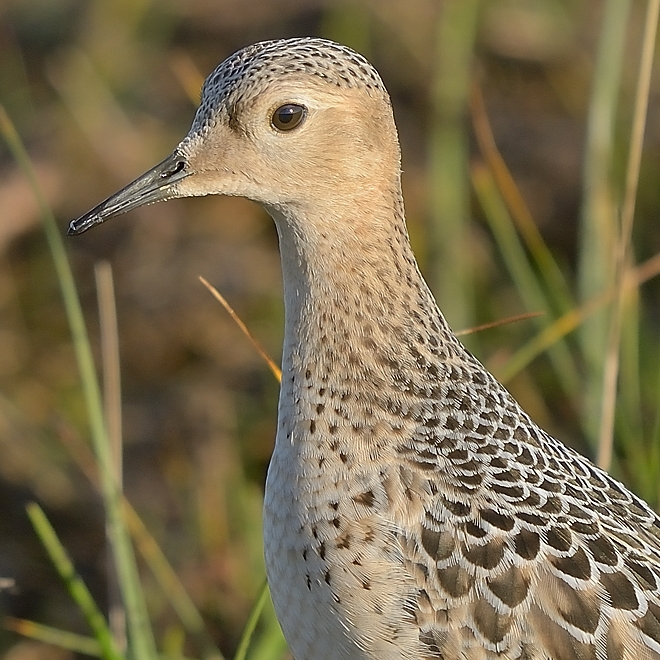
Buff-breasted Sandpiper, John Muir CP, Lothian (Photo: Mike Thrower)

Eleonora's Falcon, Spain (Photo: Andrew Moon)

Merlin, Fife Ness, Fife (Photo: John Anderson)
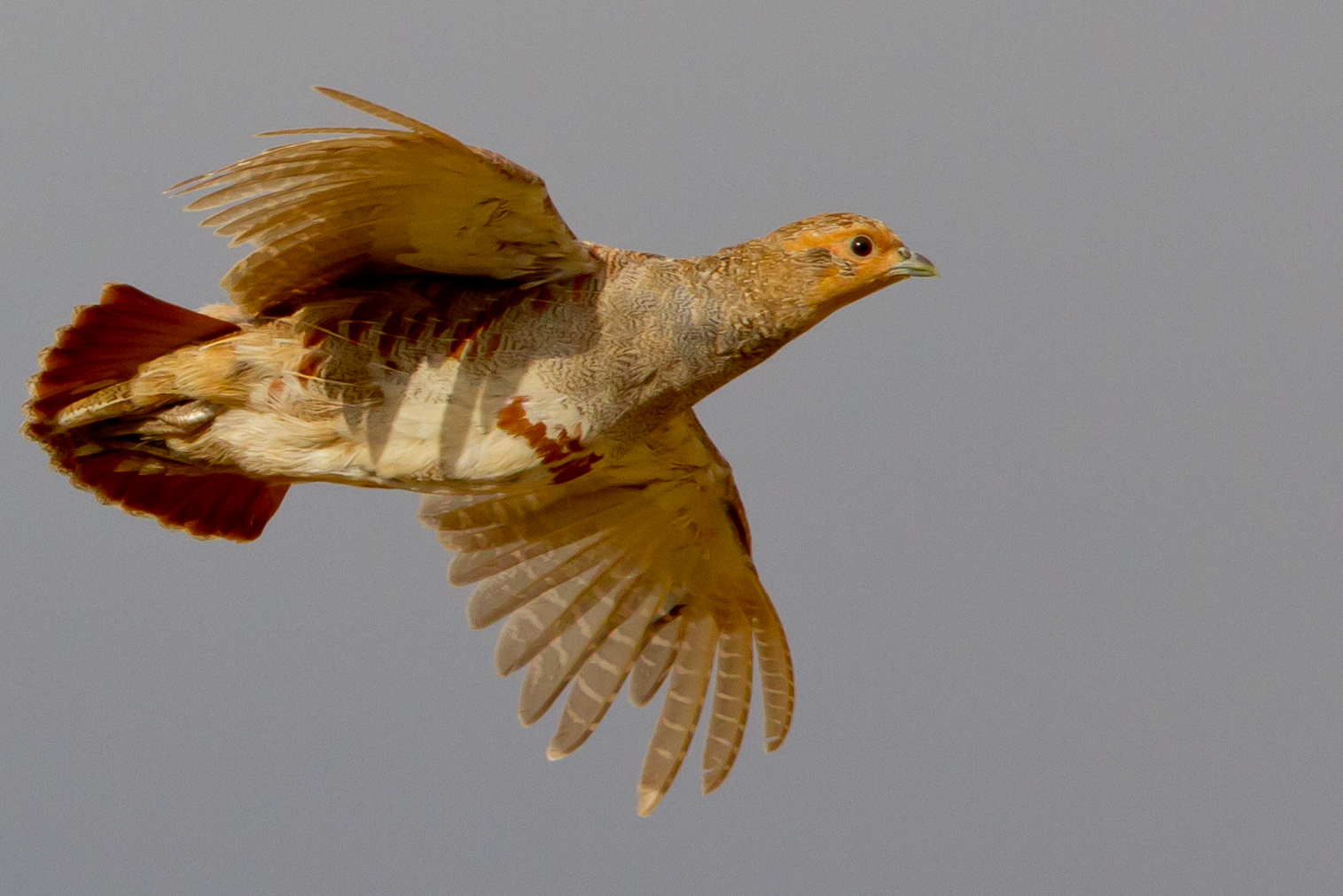
Grey Partridge, Cholsey Downs, Oxfordshire (Photo: Roger Wyatt)
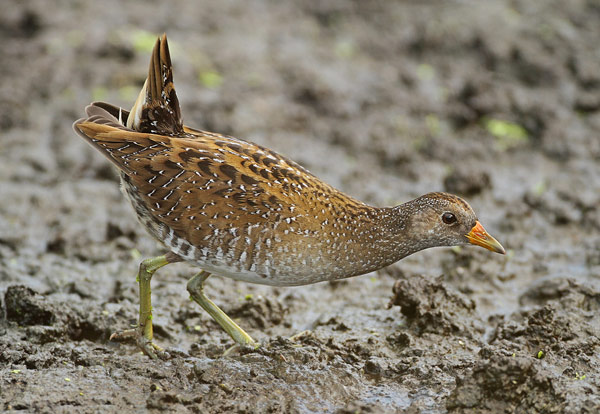
Spotted Crake, Greylake RSPB, Somerset & Bristol (Photo: Gary Thoburn)
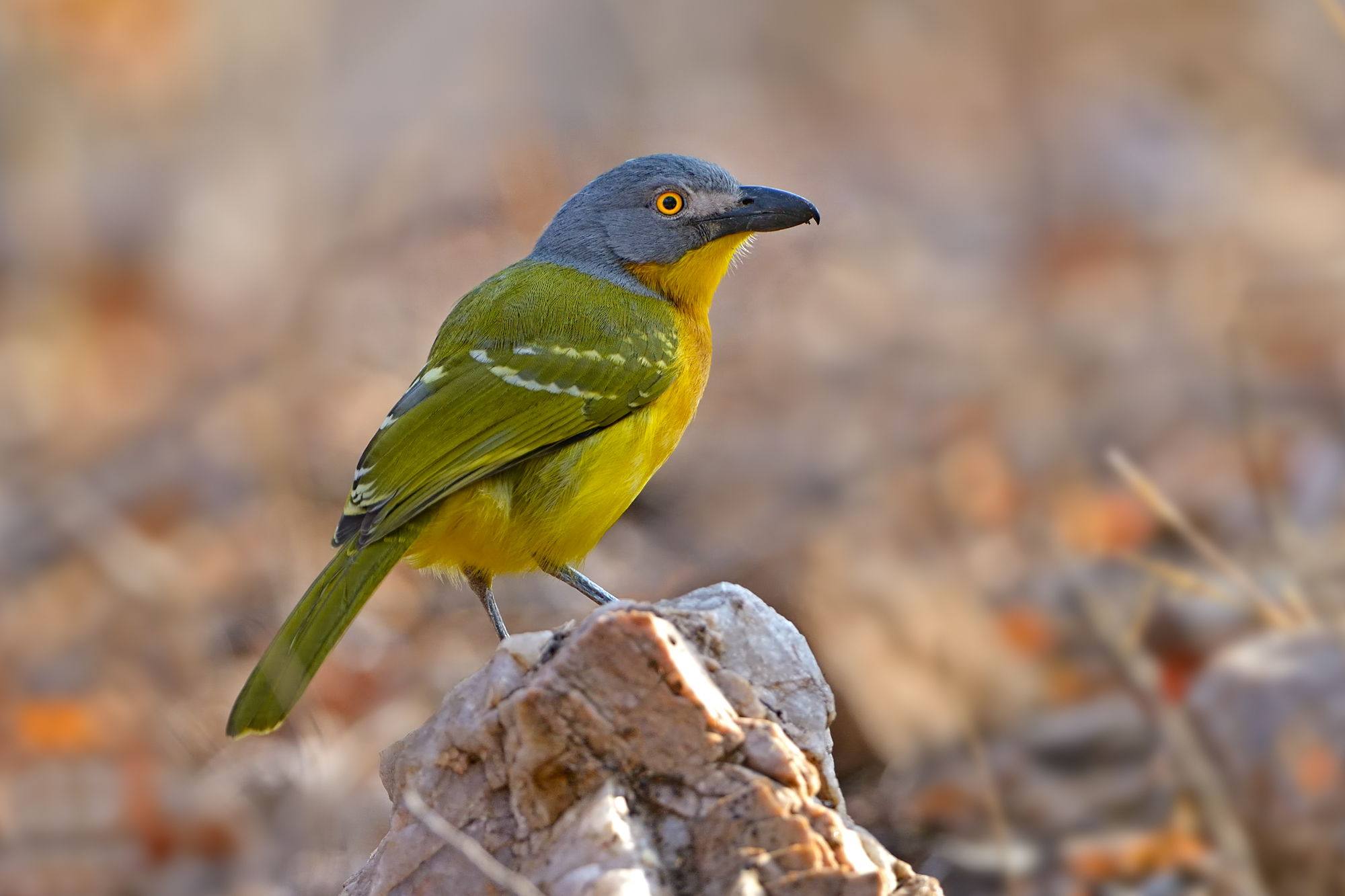
Grey-headed Bushshrike, South Africa (Photo: Dileep Kumar)
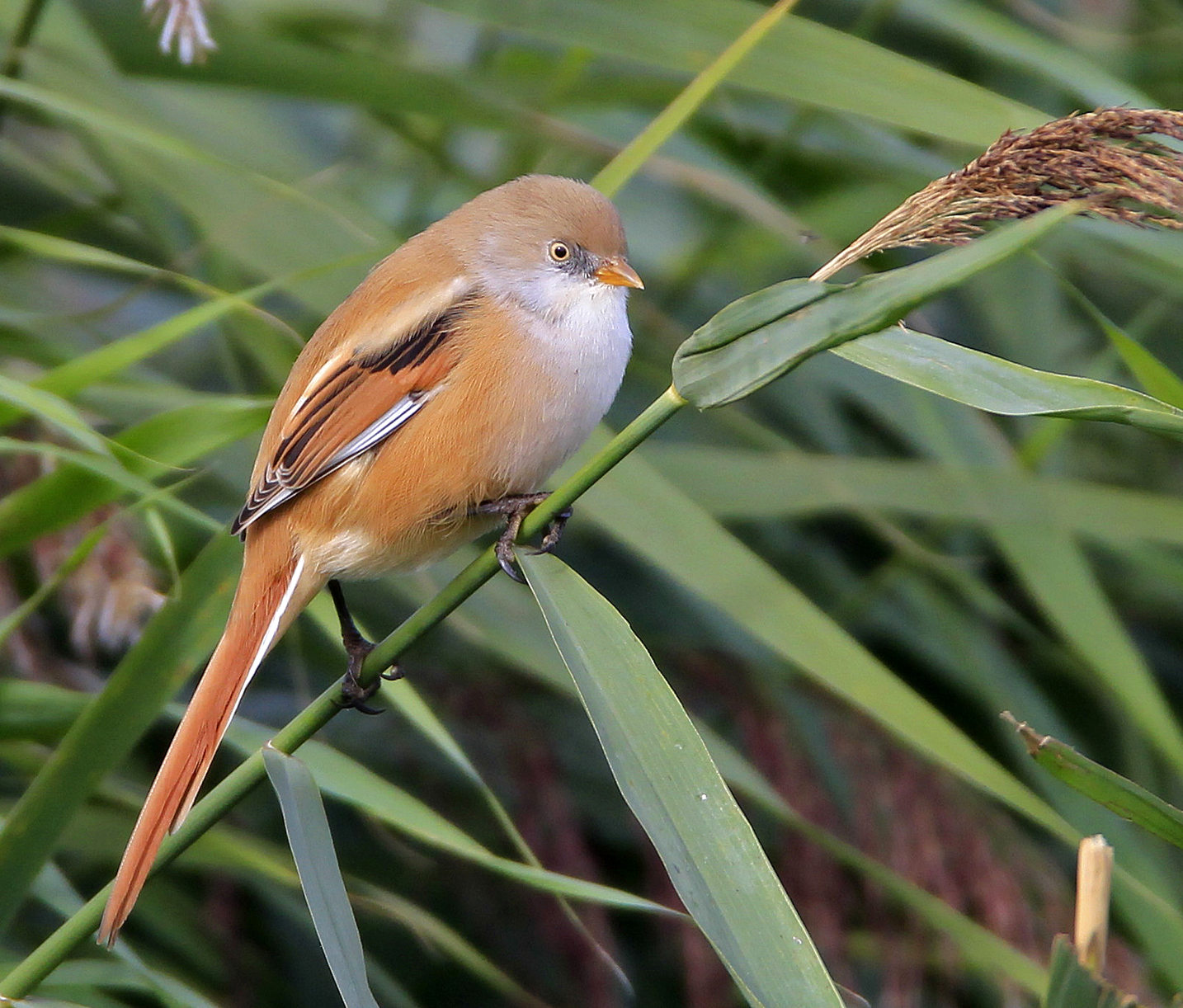
Bearded Tit, Minsmere RSPB, Suffolk (Photo: Ian Clarke)

Bar-tailed Godwit, Titchwell RSPB, Norfolk (Photo: Jon Evans)


